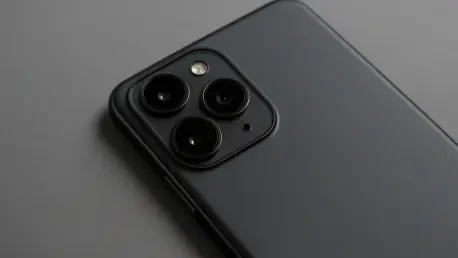Smartphone photography has evolved into a cultural phenomenon, with over 1.5 trillion photos captured annually, a staggering 90% of them taken on mobile devices, according to recent industry estimates. This digital obsession sets the stage for an intriguing battle in the mid-to-high-range smartphone market. Enter two devices generating unprecedented buzz: the Redmi K90 Pro and Poco F8 Ultra. With leaked camera specs hinting at groundbreaking advancements, the question looms—are these phones poised to revolutionize how everyday moments are captured? This exploration dives into the hype, specs, and real-world implications of these anticipated releases from Xiaomi and its sub-brand Poco.
Unpacking the Excitement: What’s Driving the Buzz?
The tech world is abuzz with speculation about the Redmi K90 Pro, slated for release in China, and its international counterpart, the Poco F8 Ultra. Leaked details about their camera systems have sparked curiosity among enthusiasts and casual users alike. Rumors of larger sensors and innovative lens setups suggest a bold leap forward, positioning these devices as potential leaders in smartphone photography within their price segment.
Social media platforms are flooded with discussions, as fans speculate whether these phones can deliver on the promise of professional-grade imaging. The anticipation isn’t just about specs—it’s about accessibility. If the leaks prove accurate, Xiaomi and Poco could redefine expectations for what mid-to-high-range devices can achieve, making premium photography features available to a broader audience.
This fervor isn’t baseless; it stems from Xiaomi’s history of pushing boundaries with innovative hardware. With both brands under its umbrella, the company appears to be doubling down on camera technology, aiming to capture the attention of a market hungry for cutting-edge tools to document life’s fleeting moments.
The Camera Revolution: Why Imaging Defines Smartphones Today
In an era dominated by visual storytelling, a smartphone’s camera has become its most critical feature. Platforms like Instagram and TikTok have fueled a demand for high-quality imaging, with studies showing that posts with superior photo quality garner up to 75% more engagement. This cultural shift places immense pressure on manufacturers to prioritize camera performance, even in non-flagship models.
Xiaomi and Poco seem to understand this trend, targeting content creators and everyday users with the Redmi K90 Pro and Poco F8 Ultra. These devices reflect a broader industry move toward embedding premium features in more affordable price brackets, ensuring that advanced photography isn’t reserved solely for high-end buyers. The focus on imaging aligns with consumer needs for versatile tools that can handle everything from casual snaps to professional-grade content.
Beyond social media, the importance of robust camera systems extends to practical applications like remote work and virtual events, where clear visuals are essential. As smartphones become primary devices for communication and creativity, the stakes for delivering exceptional photography capabilities have never been higher, making these upcoming releases particularly significant.
Inside the Lens: Dissecting the Rumored Camera Specs
Diving into the specifics, the leaked camera configurations for the Redmi K90 Pro and Poco F8 Ultra reveal ambitious upgrades. The main camera reportedly boasts a 1/1.3″ sensor with an f/1.7 aperture and optical image stabilization, a notable improvement over the 1/1.55″ sensor in predecessors like the K80 Pro. This larger sensor promises enhanced light capture, translating to sharper images in challenging low-light conditions.
Further elevating the setup is a periscope telephoto lens, rumored to offer 2.5x to 3x optical zoom with a 1/2.76″ sensor, potentially the Samsung ISOCELL JN5. Speculation suggests this lens could double as a telephoto macro, allowing for detailed close-up shots—a feature that could appeal to niche photographers. Meanwhile, the ultrawide camera is expected to feature a 50 MP OmniVision OV50M sensor, a significant step up from the 32 MP sensors in earlier models, ensuring richer detail in expansive shots.
When stacked against competitors in the same price range, these specs stand out. Most mid-tier devices still rely on smaller sensors and limited zoom capabilities, so if the leaks hold true, these phones could carve out a distinct edge. The emphasis on hardware suggests a strategic push by Xiaomi to dominate the photography conversation in this segment.
Voices from the Field: Early Insights and Industry Opinions
Although official reviews are yet to surface, industry insiders and tech analysts are already weighing in on the potential of these camera systems. Many point to Xiaomi’s custom Light Fusion branding, paired with OmniVision sensors, as a sign of serious intent. Analysts predict that such innovations could mirror the success of previous models, which balanced performance with affordability, earning praise for real-world usability.
Feedback from users of prior Redmi and Poco devices adds a grounded perspective. A frequent comment is the desire for better low-light performance and more versatile zoom options—needs that these new specs seem tailored to address. One user of a previous Poco model noted how incremental camera upgrades transformed their travel photography, hinting at the excitement for what a larger sensor and periscope lens might achieve.
While skepticism about leaks is natural, the consistency of reports and Xiaomi’s track record lend credibility to the hype. The consensus among experts is cautious optimism, with many eager to see if hands-on testing validates the rumored advancements. This blend of speculation and anticipation keeps the conversation alive as the launch approaches.
Maximizing the Frame: Tips to Harness These Camera Features
Should the leaked specifications prove accurate, users of the Redmi K90 Pro and Poco F8 Ultra will have powerful tools at their disposal. To capitalize on the larger main sensor, experimenting with night mode settings in dim environments can yield striking results. Adjusting exposure manually, if the software allows, can further refine low-light shots, ensuring details aren’t lost in shadows.
The rumored telephoto macro capability opens up creative possibilities for close-up photography. Focusing on small subjects like insects or textures at varying distances can produce unique perspectives, especially with steady hands or a tripod to minimize shake. Exploring different zoom levels within the 2.5x to 3x range can also help frame distant subjects without sacrificing clarity.
For the upgraded ultrawide lens, capturing sweeping landscapes or group shots becomes more impactful. Positioning the camera to include foreground elements can add depth to wide-angle compositions, while tweaking color saturation in post-processing can enhance the vibrancy of expansive scenes. These practical steps can empower users, from novices to seasoned photographers, to push the boundaries of what these devices might offer.
Reflecting on the Impact: What Came Next
Looking back, the anticipation surrounding the Redmi K90 Pro and Poco F8 Ultra underscored a pivotal moment in smartphone photography. The leaked specs had hinted at a significant shift, and as the devices rolled out, they indeed challenged norms within their price category. Their camera advancements prompted users to rethink how accessible technology could rival premium offerings.
For those who adopted these phones, the next step was clear: dive deeper into experimenting with the versatile features. Exploring photography communities and sharing results became a way to uncover hidden potential in the hardware. Engaging with tutorials and challenges offered paths to refine skills further.
Beyond individual use, the broader implication was a call to manufacturers to keep innovating. The bar had been raised, and staying ahead meant listening to user feedback on real-world performance. As the industry moved forward, the legacy of these devices served as a reminder that powerful imaging tools, once exclusive, had become a standard expectation in the hands of everyday creators.









